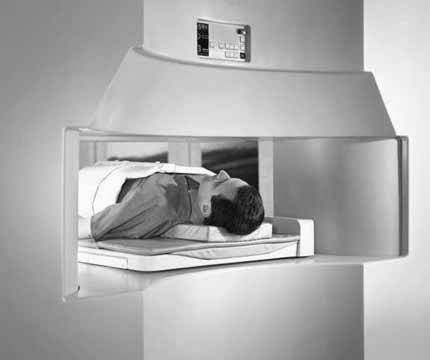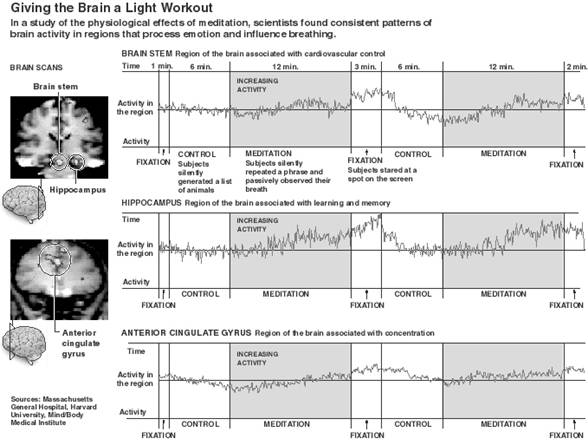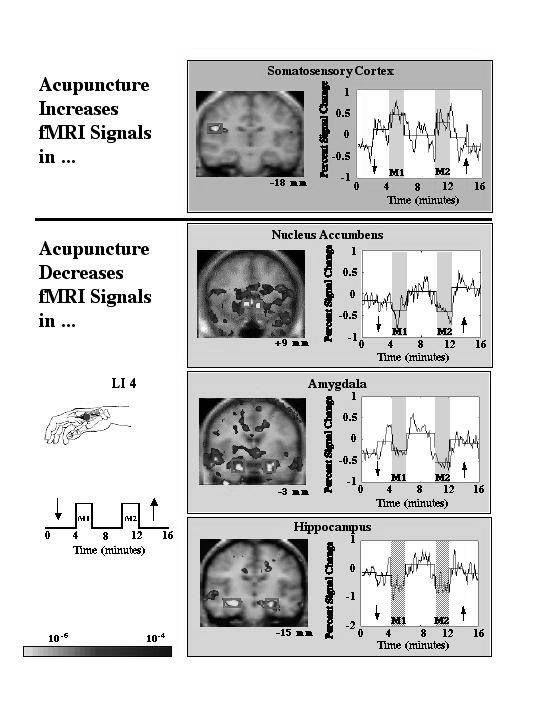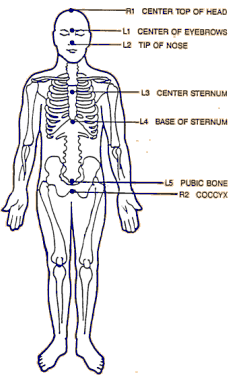Cindy Mason:
Stud Health Technol Information 2005;118:247-256. Symposia
for Institute for Future Health Care Technology, Boston,
Mass., 2003. PMID
16301783
http://www.ncbi.nlm.nih.gov/pubmed/16301783
"It is probably true that, in
general, the most fertile developments in the history of human
thought are born at the intersection of two currents of ideas.
The currents may originate in the midst of totally different
cultural conditions, in diverse epochs and places."
Heisenberg, physicist
Global Medicine Technology
Cindy Mason, Ph.D.
Visiting Research Scientist
Stanford Research Institute,
Abstract
In little more than a decade,
linkages between health care technologies of different
cultures and continents have merged, resulting in global
medicine technology. The next generation of young scientists
and clinicians from both the research and clinical communities
are merging established ancient technologies from outside the
1. Introduction
In this article
we briefly discuss some key ideas in eastern mind training
technologies and point to some of the ongoing activities in both
clinical and research settings. Most of
the ideas presented here embrace the notion that there is a
relation, in fact a dialogue, between mind, brain and body.
Concepts like self-awareness, mindfulness, forgiveness, and
honesty, are also big players in the ancient technology of
healing and the mind. Also included in
this new health landscape are the ideas that mind, brain and
heart are not separate organ systems, and that mind and body
refer to the same concept. Mind training
technologies were not developed in a laboratory nor do they rely
on silicon chips or pharmaceuticals, rather, they were developed
and passed down by "gurus" or teachers, sometimes religious
leaders, who have developed deep insight into human nature and
human behavior. Culture has preserved the teachings. Clinical
success has kept them alive. They do not replace nor compete
with western technology but are a marriage made in heaven for an
ailing healthcare system, where patients feel alienated,
hospitals are going broke, and doctors yearn for a system in
which they, too, can slow down and provide compassion. In the
article we discuss the role of healthcare culture in global
medicine in the
2. The Culture of Healthcare
A revolution in western medicine, like in physics, will come from realizing that our method of questioning is limiting our solutions. The need to separate mind from body in order to describe and explain them fails to capture the interplay between mind and body. This interplay now appears to be fundamental in theories of healing and disease formation. Without realizing this interplay we will fail to utilize our full capacity to address not only clinical and financial healthcare issues but administrative ones as well. The fMRI diagnostic technique provides much needed evidence for western cultures to understand why and how some of these ancient medical teachings work - not only how they awaken, regulate, and influence the body's own healing mechanisms but how they work together with western medicine. Such evidence provides the key to our ability to integrate these methods successfully and transform an ailing healthcare system and restore the level of standards and scrutiny we have grown to expect from western medicine.
3. Mind-Brain-Body Dialogue
Clinical studies of these practices, along with positive clinical results of acupuncture and acupressure, and studies of the mind during these practices, indicate there are a number of effects occurring in the mind/body as we engage in these ancient "technologies". The invention of the fMRI provides details of the brain "in action" in a way previously imagined impossible. As shown in Figure 1, the fMRI does not require an IV, thus it is less invasive than PET scans (for an introduction to fMRI, see [27],[28]). It also requires fewer brain images to capture brain activity. General information about fMRI and fMRI studies can be found at websites for a variety of places with on-going programs involving fMRI [23][24][25][26].
Figure 1. Functional
MRI pictured below. The man is getting
his head examined. Photo source:
Radiology Info[25].

Figure 2 shows fMRI and EEG
images that demonstrate the
influential relationship between
meditation and brain activity. This study
was performed at the Gollub Neuroimaging Lab at
Figure
2. Physiological effects of meditation. Functional MRI images
on the left, EEG on the right. Source: Gollub Neuroimaging
Lab,

The next set of fMRI images in
Figure 3, also from Gollub Neuroimaging Lab[27], shows the influence from body to brain, as
an acupuncture needle insertion causes changes in the brain. The figure below illustrates the multiple
effects of using acupuncture to needle an area of the body known
as the Hoku point, Hegu point, or Large Intestine-4 (LI-4),
located on the top side of the hand, in the highest place on the
mound of tissue between thumb and index finger (think about the
area where children draw faces on their hands and animate them,
the inside corner of the mouth on that face points to LI-4). The
area is one of the more well known acupuncture/acupressure
locations and is commonly associated with pain relief but has
multiple uses. The preliminary results of
the study suggest that acupuncture needle
manipulation on either hand relates to activity in the limbic
system and subcortical
structures. For more details on this
project see [37].
Figure
3. Physiological
effects in brain from needle manipulation of the hand area
known as Hoku or Large Intestine
4 (LI-4) point.
Source: Gollub Neuroimaging Lab,

In summary, we are now in a position never
before experienced to understand how the mind creates changes in
brain function over time, to watch the ways our mental and
emotional lives affect our brain function, and to see the body's
relationship to the brain. It is now
possible to watch how persistent mind training produces enduring
changes in the brain, beneficial for physical, emotional,
cognitive and behavioral health. They are not separate but are
in relation and in dialogue. Because many of the
mind-body-brain technologies are relatively inexpensive, these
studies have positive implications for medical practitioners and
a medical system pushed to its limits to find economical ways to
help patients find solutions
4. Transformation of a Medical
Practice
To become a practitioner who works with prana,
or qi, one of the more important
aspects of training is to develop your own meditation practice. The strength of your practice and the
quality of the teachers you encounter are central to the quality
of care you will ultimately provide as a practitioner who works
with qi or prana. Knowledge about
meditation practices is passed down through oral teachings. As a
result, the lineage of the teacher as well as access to the
teacher is important. The path to health prescribed by lineage
teachings includes systemic mind training such as meditation and
spiritual practices as well as certain types of body meditation
including yoga, qigong, tai qi, which work with the mind-brain-body
dialogue using movement and breath together. Body
meditation practices release tension in the body, freeing the
breath, and uses postures and movements that open the spine,
joints, and limbs, encouraging body fluids to move, at the same
time relax the mind.
What type of
meditation practices work for an individual is not a
one-size-fits-all prescription. Generally, styles of meditation are a result
of recommendations by friends or a result of personal inquiry. Often more than one type of meditation is
explored before finding something satisfying, as there are many
aspects to showing up for such teachings on a regular basis
including location, availability of a teacher we feel
comfortable with, the surroundings and social support offered in
meditation community, family support in allowing time and space
to develop the practice. Often there are weekend retreats and
cost is still sometimes a factor when housing or travel is
involved. Many hospital facilities and
HMOs are beginning to offer education and support for these
activities as a means of addressing patient needs.
The idea that
meditation and mind training can influence health is not new. As long ago as 1975, Dr. Herbert Benson
studied meditation and the development of a practice for
cultivating the "relaxation response" as a means for combating hypertension[10]. What
is new is the invention of technologies that allow us to see
changes in brain activity as a result of such mind training
practices. Recently Tibetan meditation
has drawn the attention of neuroscientists and is the focus of
studies at the
5. Self Care
An
important aspect of the soft technologies is that of
self-care. Many lineages encourage
individuals not to become dependent upon a healthcare
practitioner but to learn self-care methods. While
these
techniques are not in fact a substitute for seeing a
practitioner, they are useful until that can be arranged, and
help extend the benefits of other medical treatments. It is interesting to note that many
individuals report being naturally drawn to taking better care
of themselves as a result of their meditation practices,
gaining the courage to make changes in habitual behaviors,
increasing personal happiness that seems to spill over into
every aspect of their life including their health.
Destructive behavior is at the root of many health problems,
ranging from obesity and diabetes to domestic violence. The relation between emotional and
physical health is most obvious among patients with heart
problems [32] which are rated as the leading cause of death in
this country. Although it is common
sense to many of us reading this paper, there is now
considerable scientific evidence that letting go of anger and
resentment can reduce the severity of heart disease. In some cases, the release of anger has
been shown to prolong the lives of cancer patients. Considering the relation between stress
and the immune system, or stress and the adrenal response, the
results of such studies are not surprising. Technological
advances in surgical instruments, anesthesia, artificial
hearts and heart valve materials may help patients manage
symptoms of heart disease, but without fundamental changes in
habitual responses, including emotional health, in a manner of
speaking, we are pissing in the wind.
Destructive emotional lives have a price not only on health,
but on social structures. Families,
workplaces, and schools all feel the price of violence,
suicides and bullying that accompany emotional disharmony. Public institutions and school systems
that cope with these problems are pressed to their limits to
understand and prevent them(e.g.
In an unusual example of global medicine, patients at Stanford
University Hospital, Lucille Salter Packard Children's
Hospital, Kaiser Permanente of Redwood City, Mills Peninsula,
California Cancer Center of Marin, and
other hospitals in the San Francisco Bay Area, are using the
Japanese art of self-care known as Jin Shin Jyutsu physio-philosphy,
to help manage side effects and emotional upheavals that
adversely affect patients during major health projects, such
as chemo, heart surgery, or transplants, and the treatments
they involve [33],[34],[35],[36]. Used
in support of whatever treatment regime the patient is
undergoing, patients subjectively report less fear, worry, and
depression. During sessions with practitioners, individuals
learn to monitor feelings and use simple recipes on themselves
involving gentle touch to harmonize difficult moods,
attitudes, or symptoms. These
self-care methods can be used by even the sickest patients
throughout the day and evening or when other treatments are
unavailable to help with nausea, sleeplessness, pain, and
anxiety, and other signs and symptoms. Practitioners quietly inspire a
philosophical focus on reducing dependence on care providers
by self-care training/instruction that guides individuals to use
self-care exercises based on how they are feeling -
physically, emotionally, mentally, and spiritually[36].
Interested readers are encouraged to try the Japanese
exercises in self-care found at the end of the chapter. There is also an exercise that supports
harmony of the spine and related functions. Jin Shin Jyutsu self-care is taught around
the world by self-care instructors[36] and can be found on
CD-ROM [33].
6. Conclusions
Future
progress in solving some of the most pressing issues in
healthcare will come by innovation and adaptation of ideas and
methods that work. Healthcare access
(especially preventative care) for a large number of uninsured,
shortage of nurses, and the rising cost of healthcare in an
aging population explosion are among just a few of the reasons
to consider using global medical technology along side
high-technology. Self-care education and
meditation training are comparatively cheap ways of reducing the
current pressures on our medical systems in the
It is likely that not long after this paper has been published
or read, there have been many more advances in this area.
It is even likely there will be a prosthetic mind or model of
mind that can help those with limited mental capabilities as a
result of our inquiries into this area. That is possibly the
next step in the intersection of east and west.
APPENDIX A
JIN
SHIN JYUTSU SELF-CARE EXERCISE
Figure
4 illustrates a self-care exercise called the "Main Central"
for harmonizing spine functions as perceived in the Japanese
healing art known as Jin Shin Jyutsu
physio philosophy[36]. As prevention or maintenance, this
exercise may be done upon waking, and/or before retiring at
night. Use pillows as necessary for
comfort. It may also be used as needed
when working with health projects. It
usually takes about 20 minutes when done properly, but may be
interrupted and resumed without difficulty or loss of benefit. As this exercise proceeds, it is useful to
visualize the breath coming up the back as you inhale, and
down the front as you exhale. Figure 4a
shows the physical locations for hands. Figure 4b gives
directions for six hand positions referenced in Figure 4a. Fingertips are often used, but palms, back
of hands, or entire hand can also be used. It
is important to be comfortable during the application of the
exercise, avoiding noise, drafts, etc. Quiet
music may be useful if you have trouble relaxing.
Figure
4a Diagram shows
hand positions used to administer self care described in
Figure 4b. R1 refers to Right Hand position in Step1. L1 is the Left Hand position in Step 1, L2
is the Left Hand position in Step 2, and so on. Source: Jin Shin Jyutsu
Insitute [36].
.
Figure 4b. gives the directions for a self care
"recipe". There are six steps that move
the hands according to descriptions below and follow the
illustration in Figure 4a.
Step 1: Place the fingers of the right
hand on the top of the head (where they will remain until step
6). Place the fingers of the left hand on your forehead
between your eyebrows. Hold for 2 to 5 minutes or until the
pulses you feel at your fingertips synchronize with each
other.
Step 2: Now move the left fingertips to
the tip of the nose. Hold them there for 2 to 5 minutes, or
until the pulses synchronize.
Step 3: Move the left fingertips to your
sternum (center of your chest between your breasts). Stay
there for 2 to 5 minutes, or until the pulses synchronize.
Step 4: Move your fingers to the base of
your sternum (center of where your ribs start, above the
stomach). Hold them there for 2 to 5 minutes, or until the
pulses synchronize.
Step 5: Move your fingers to the top of
your pubic bone (above the genitals, center). Stay there for 2
to 5 minutes, or until the pulses synchronize.
Step 6: Keep your left fingertips in
place and move your right fingertips to cover your coccyx
(tailbone). Hold for 2 to 5 minutes or until the pulses you
feel at your fingertips synchronize with each other.
Notes: The right
hand remains on the top of the head while the left hand moves
down the body until the final step. The
practice is typically performed while lying flat, using
pillows as necessary to maintain comfort. General
instruction regarding the breath during the self care practice
is to envision the breath inhaling up the back of the
spine/body and exhaling down the front of the spine/body.
References
[1] Future of Health Technology
Summits 1996-2002, www.fhti.org
[2] National Institute of Health,
www.nih.gov
[3] The National Academies Institute
of Medicine, www.iom.edu
[4]Bushko, R., Defining Future of Health
Technology: Biomechatronics, in Future of Health Technology, Renata
Bushko, ed., IOS Press,
[5] Mason, C. and Lieberman, H.,
Intelligent Agent Software for Medicine, in
Future of Health Technology, Renata
Bushko, ed., IOS Press,
[6] Piburne,
S. and Pell, C., The Dalai Lama a Policy of
Kindness: An Anthology of Writings by and About the Dalai
Lama/Winner of the Nobel Peace Prize Snow Lion
Publications,
[7] Mason, C., "Reduction in Recovery
Time and Side Effects of Stem Cell Transplant Patients Using Physio-philosophy," in Psychoneuroimmunology Research Society
Conference, 2003,
www.pnirs.org
[8] V.A. Barnes et al., Proceedings
of the 11th International Interdisciplinary Conference on
Hypertension in Blacks,
[9] Norris, K., Stress Reduction in
the Prevention and Treatment of Cardiovascular Disease in High
Risk Minority Populations, presentation at The Congressional
Prevention Coalition on Health Care for Minority Populations:
Prevention of Hypertension and Heart Disease, on June 3, 1999
.
[10]Herbert Benson, http://www.mbmi.org/
[11] Center for Mindfulness,
University of Massachusetts Medical School
, www.umassmed.edu/cfm/
[12] International Tibetan Qigong
Association, www.tibetanqigong.org
[13] http://www.stanfordhospital.com/clinicsmedServices/clinics/complementaryMedicine/index.html,
[14] www.columbiasurgery.org/divisions/cardiac/staff_oz.html,
[15] http://nccam.nih.gov/clinicaltrials/,
National Institute of Health,
[16] Gollub RL, Hui
KKS, Stefano GB.
Acupuncture pain management coupled to immune stimulation. Acta Pharmacologica Sinica. 20(9):769-777, 1999.
[17] Harvard Medical School Neuroimaging Lab, www.mgh.harvard.edu/depts/neuroimaging/gollublab
[18] Lazar, S., http://www.mgh.harvard.edu/depts/neuroimaging/gollublab/meditation.html
[19] Lazar, S.W., Bush, G., Gollub R.L., Fricchione,
G.L., Khalsa, G., Benson, H.
(2000) Functional Brain Mapping of the Relaxation Response and
Meditation. NeuroReport. 11:1581-1585.
[20]Benson H, Beary
J, Carol M. The relaxation
response. Psychiatry.
1974; 37:37-46. [21]Benson H,
[22]Benson H. Your
innate asset for combating stress. Harvard
Business Review. 1974; 52:49-60.
[23] A Public Repository of Peer
Reviewed fMRI studies and their
underlying data, National Science Foundation, W.M. Keck
Foundation, National Institute of Mental Health, Sun Center
for Excellance for Neuroscience,
www.fmridc.org
[24] www.fmri.org
[26] www.brainmapping.org,
[27] http://www.mgh.harvard.edu/depts/neuroimaging/gollublab/meditation.html
[28] http://tezpur.keck.waisman.wisc.edu/ W.M. Keck Laboratory for Functional Brain
Imaging and Behavior
[29] http://www.fmrib.ox.ac.uk/fmri_intro/
[30]Health Emotions Research
Institute, Scientifically Determining How Emotions Influence
Health,
[31] Complimentary and Alternative
Medicine Program at Stanford, http://camps.stanford.edu
[32]Allison TG, Williams DE, Miller
TD, Patten CA., Bailey KR, Squires RW, Gau
GT. Medical and Economic Costs of Psychologic
Distress in Patients With Coronary Artery Disease.
Mayo Clinic Procedures. 1995; 70:734-742.
[33] Mason, C., Integrating Self-Care
Into Your Own Recovery, www.21stcenturymed.org
[34] Sempell,
P., Integrating The Healing Art of
Jin Shin Jyutsu Into Western and
Surgical Practice,
[35] http://www.marin-oncology.com/
[36] Jin Shin Jyutsu
Institute, www.jinshinjyutsu.com
[37] http://www.mgh.harvard.edu/depts/neuroimaging/gollublab/acupuncture.html
[38]